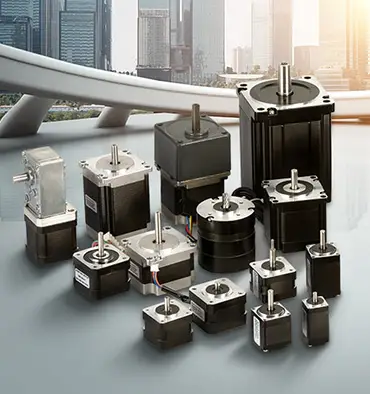4 differences between stepper motor and servo motor
Stepper and servo motors are two common types of motors used in various applications. Both have unique features and benefits, but they are not interchangeable. Understanding the differences between them can help you choose the right motor for your application. In this paper, we will discuss the difference between stepper and servo motors.
Definitions and Effects
Stepper motor: A stepper motor is a motor that rotates at a small and precise step length. It moves in response to digital pulses and provides accurate positioning and speed control. Stepper motors have no feedback mechanism and rely on the control signal to determine the position.
Servo motor: A servo motor is a motor that rotates to a specific location based on feedback from an encoder or parser. It provides high precision and torque control, making it suitable for applications requiring precise positioning.
Structure and Operation
Stepper motor: A stepper motor consists of a rotor and stator, both with a toothed electromagnet. The rotor responds to a digital signal sent to the stator to move in small increments. Stepper motor torque is low but provides high accuracy and control.
Servo motor: The servo motor also consists of rotors and stators, but it has an additional feedback mechanism, such as an encoder or rotary transformer. Feedback is sent to the controller, which adjusts the current provided to the motor to reach the desired position and speed.
Torque and speed
Stepper motor: Stepper motor torque is low, high current is required to achieve high speed. They are suitable for applications requiring precise positioning and control but not high-speed operation.
Servo Motor: Servo motors provide high torque at low speeds and can achieve high speeds with less current. They are suitable for applications requiring high precision and speed control.
Cost and complexity
Stepper motor: Compared to the servo motor, the stepper motor is simple and cheap. They do not require feedback mechanisms and are therefore easy to use and maintain.
Servo motor: Because of the feedback mechanism, servo motors are more complex and expensive than stepper motors. They require more advanced control systems to operate, increasing the overall cost and complexity.
Conclusion
In short, stepper motors and servo motors have different characteristics and advantages that make them suitable for different applications. Stepper motors are ideal for applications requiring precise positioning and control, while servo motors are suitable for applications requiring high precision and speed control. When selecting the right motor for your application, consider torque, speed, accuracy, and cost to determine the most suitable motor type.


Leave a Reply